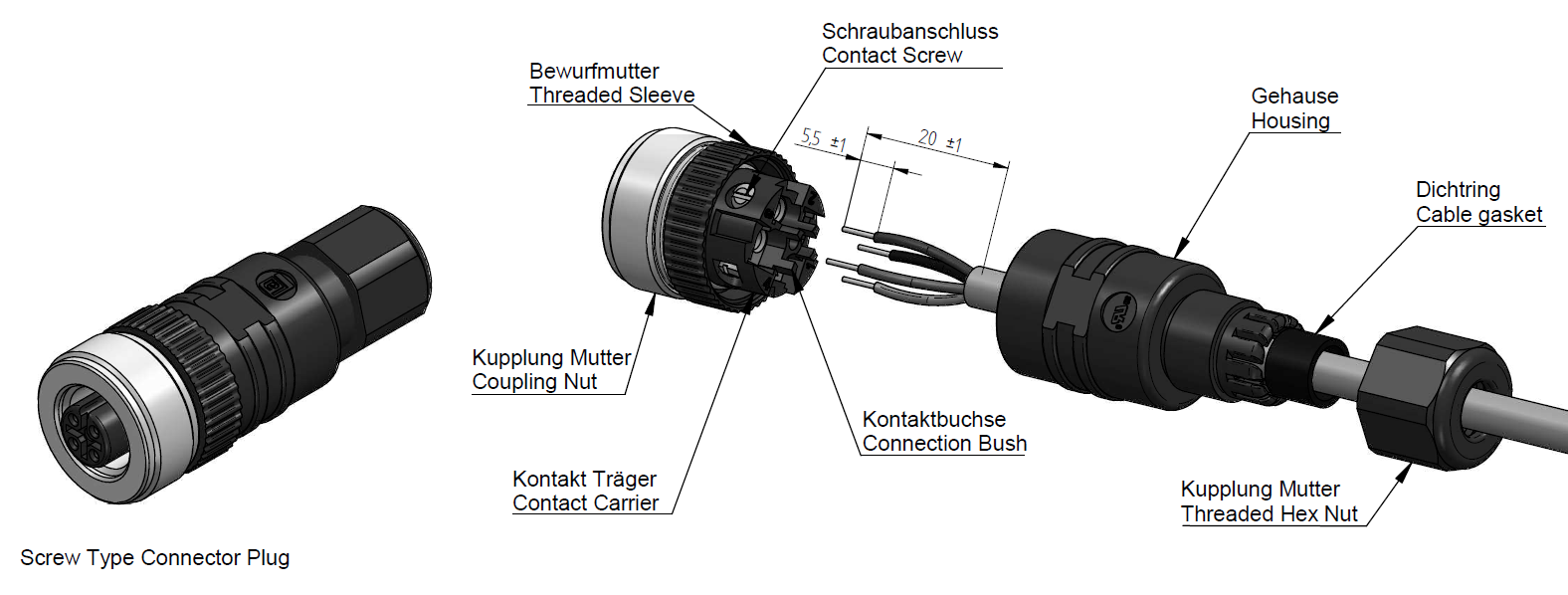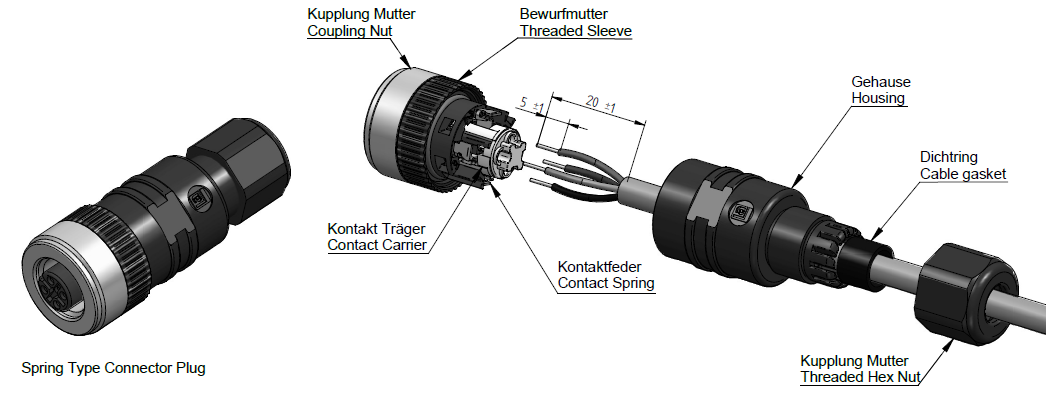Weighing Different M12 Termination Methods for CPG Environments
IIoT is set to shape smarter, more responsible operations in the world of consumer packaged goods (CPG). But, as new IIoT and automation strategies are established, it’s easy to underestimate the importance of the puzzle piece that’s often overlooked: the connector! From the production process to the cloud, connectors impact performance at every level of an automation network.
IIoT environments demand smart devices: PLCs, IPCs, human machine interfaces (HMIs), robots, cameras, sensors, etc. Each of these devices needs to be connected to the network. If it’s a wired connection, then the device also requires a connector to serve as an essential link between the nodes of the network.
Although M12 connectors were originally developed for sensor signal processing, they’re now key players in industrial power and data transmission applications. They’re used to connect things like sensors, actuators, switches, PLCs and I/O boxes. This connectivity technology is crucial to capture, process and transmit data from increasingly intelligent machines to support automated and responsive decision-making. The data must be transmitted via highly reliably, high-speed connections—all while enduring things like dust, noise, extreme temperatures and vibration.
M12 connectors deliver the speed, reliability and ruggedness that today’s automation environments need, providing connectivity to support complete visibility into and control of the manufacturing process to reduce maintenance costs, boost safety, improve efficiency and decrease downtime. (In CPG environments, eliminating downtime is crucial. Just a few minutes of production loss can lead to tons of raw material waste.)
Connector Termination Methods & Why They Matter
Field-attachable connectors work well in applications where cable length cannot be predicted ahead of time. They allow you to cut the amount of cable you need in the field after appropriate lengths are determined. From there, you can attach a connector.
When it comes to terminating cables to connectors in the field, there are three classic termination methods you can use. No matter which option you choose, the first step is always to prepare the cable for termination. To do this, you begin by installing the cable gland, grip assembly and housing over the cable to enable termination after stripping the cable.
Termination style can affect connector performance and impact how much repair work the maintenance team has to manage. Let’s take a closer look at these three classic common termination methods.
- Insulation-Displacement Contact (IDC) Termination
IDC termination—also known as a self-locking connection—enables a very quick, easy-to-complete connection. It’s also the most popular termination method in industrial environments and harsh environments.
To complete the termination process, you strip the cable after putting the threaded hex nut over a cable with a typical diameter of between 6 mm and 8 mm (22 AWG to 26 AWG). For shielded cables, you need to back-cover (fold back) the braid and wrap the drain wire around it. Then the cable is ready for wire management, which follows the typical TIA color codes for Cat 5e, Cat 6, Cat 6A, etc.
After you insert the wires into the wire management, you need to trim the excess wire beyond the load bar/wire management. Then assemble the load bar into the IDC area of the plug. The grounding drain wire needs to connect to the grounding logic of your connector, which can be done via a drain wire on the connector body or through a connection with the threaded hex nut. The method you choose depends on the connector’s grounding design.
From there, you can slide the coupling nut to the plug body and tighten it. Depending on the installation guidelines, you may need a wrench tool to tighten it completely.
Because no punchdown tools are required, IDC termination is a cost-effective process. It’s also a fairly easy termination to complete. Because the wire connection happens through the assembly process, there’s no need to screw the wires or pull connection surfaces. - Screw Termination
- Spring-Type Termination

The screw termination method is a classic method that’s been used for several years.
The process begins by preparing the cable for the assembly. After stripping the cable jacket, the wires should be stripped to ensure reliable contacting. Stranded wires require additional sleeves, which should be crimped before being assembled into the contacting holes of the cable socket or plug.
Remember to keep required insulation for pin 5 in mind: You need to insert the cores to reach the very bottom of the contacting holes and tighten the contact screws. (Clockwise tightens and counter-clockwise loosens.)
At this point, the contacting process is complete! It’s important to maintain your focus through the final assembly, which is one of the most important steps in keeping the sealing system tight.

Spring-type termination connectors enable optimal and comfort termination of the wires to the contact pin face. This allows you to create fast and reliable connections in the field.
No tools are required for wire connection in this termination method. Instead, you push the contact surfaces together and insert the stripped wires into the cable socket/plug body. After this, you assemble the socket or plug, slide the seal components and screw them to the connector body.
 Product lines are RSCQ(S), 0986 EFC, 0986 EMC 102.
Product lines are RSCQ(S), 0986 EFC, 0986 EMC 102.
Which Termination is Best for the CPG Market?
In most CPG environments, selecting the right termination method means finding a balance between costs, reliability and timelines. Ask yourself these questions:
- What are the maintenance requirements? How often will the connectors be replaced during the lifetime of the application?
- What’s the level of vibration in my environment?
- How much time do we have to complete the installation and termination per node?
- How much money can we spend on connectors?
It’s possible that you’ll need to meet completely different requirements on a node connection within the same application. This is why the CPG market requires unique connectivity solutions that are customized to your needs. Belden can support your vision through our Connectivity Center. Learn more here.
![System.String[]](https://assets.belden.com/transform/15684ba8-01c8-4436-8f91-1067bdf79aa1/artjom-bil-1024x1024-1?io=transform:fill,width:300,height:300)